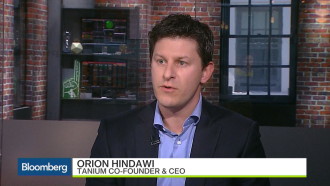 Software King of the World, Microsoft, is rolling out upgrades to its sales software using data from LinkedIn.
Software King of the World, Microsoft, is rolling out upgrades to its sales software using data from LinkedIn.
Microsoft CEO Satya Nadella said that the cunning plan was central to the company’s long-term strategy for building specialised business software.
The move means improving Vole’s sales software Dynamics 365, so it can take on market leader Salesforce.com. It is the first thing to come out of Microsoft’s $26 billion acquisition of LinkedIn, the business-focused social network.
The new features will comb through a salesperson’s email, calendar and LinkedIn relationships to help gauge how warm their relationship is with a potential customer.
The system will recommend ways to save an at-risk deal, like calling in a co-worker who is connected to a potential customer on LinkedIn.
“The artificial intelligence, or AI, capabilities of the software would be central. I want to be able to democratize AI so that any customer using these products is able to, in fact, take their own data and load it into AI for themselves,” Nadella said.
LinkedIn has 500 million members globally, one of the first big milestones for the business social network since its acquisition.



















